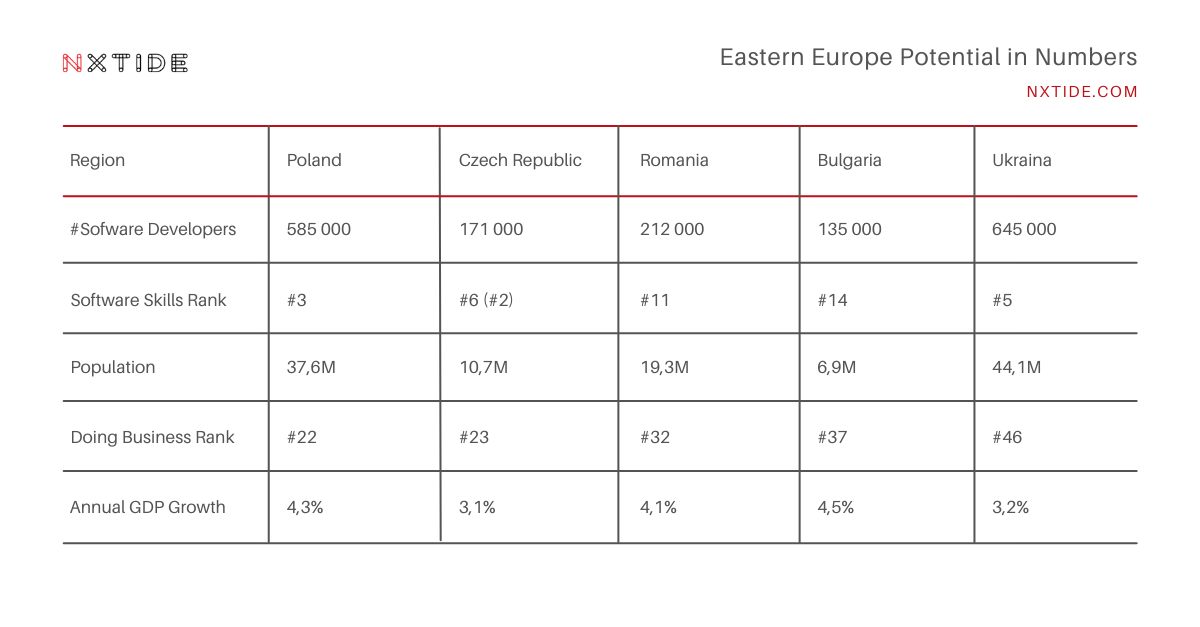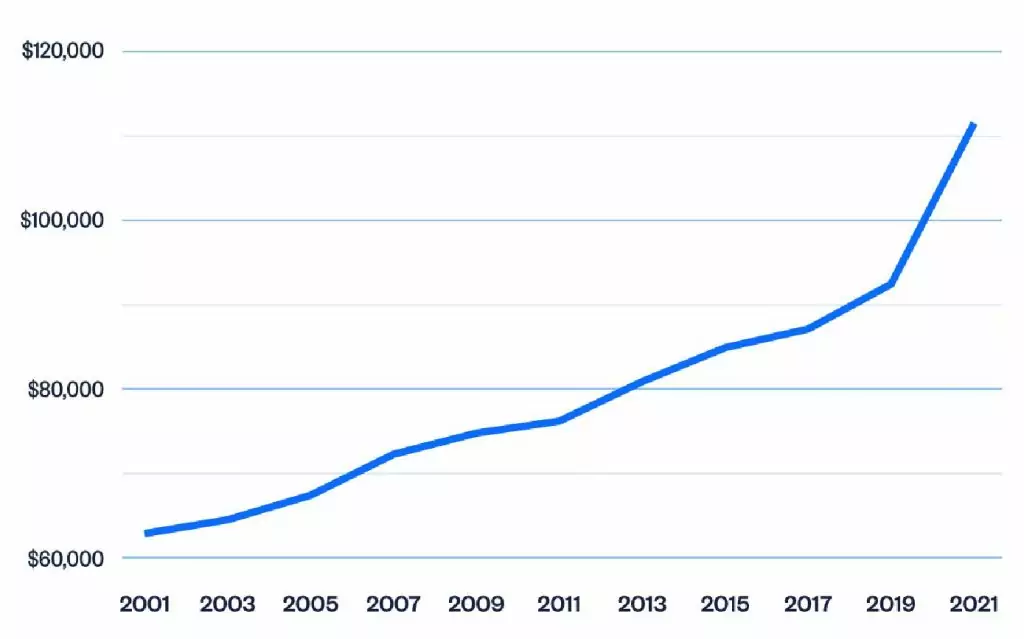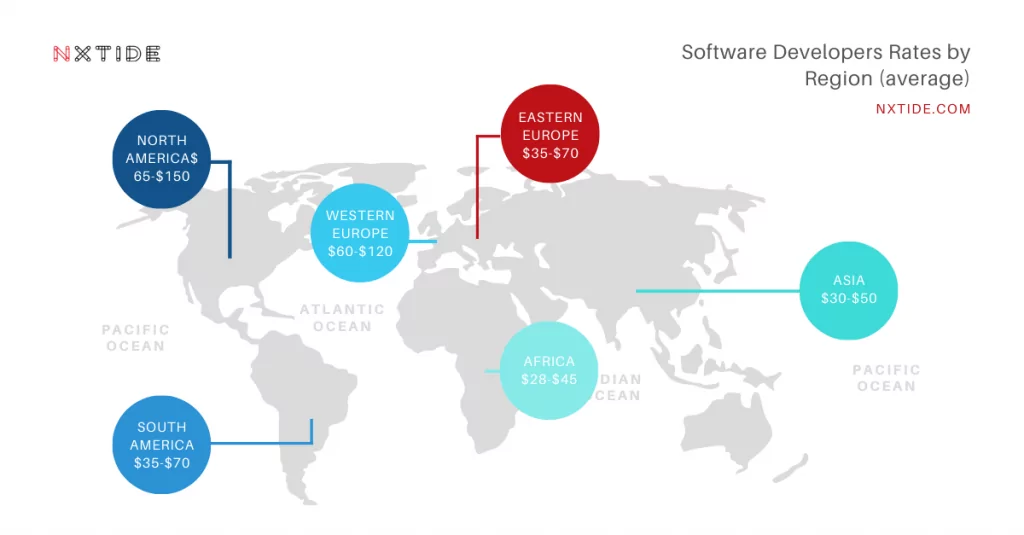The Global Shortage of Software Developers and Its Serious Implication in the Comming Years.

The Global Shortage of Software Developers and Its Serious Implication in the Comming Years.
The operational consequences of a software developer shortage and tech talent gap.
The global shortage of software developers is a well-documented and ongoing problem. In recent years, the demand for software developers has exploded, while the supply has remained relatively static. This has led to a situation where there are simply not enough software developers to meet the demand. There is a global talent shortage in nearly every industry; however, when it comes to software development, the need for qualified individuals is much higher. In recent years, technological advancements have caused an increase in jobs within this field, and record numbers of companies are now struggling to find employees who meet the qualifications. The need for more expertise in programming languages, automation, and cutting-edge technologies such as AI and neural networks, machine learning, big data, AR/VR/MR, DevOps. , and IoT is growing. All of this has resulted in businesses having to compete for a smaller pool of talent that may or may not have all of the skill sets you require.
The global tech skills problem.
As of 2020, the world population was 7.8 billion people. Of these 7.8 billion people about 26,9 million are software developers (according to the US Bureau of Labor Statistics). This makes for a ratio of 1 software developer per 2,880 people in the world. Considering the daily technology consumption these numbers seem to be very worrying. According to the latest software developers shortage report by the World Economic Forum, over the next decade, there will be a global shortfall of 18.2 million IT-related workers. In addition, a 2020 survey from Gartner found that over 2,5 million IT jobs will go unfilled by 2022, and this number is expected to rise as high as 5.5 million by 2025. The data suggest that global software developer and tech talent shortage aren’t going away any time soon causing severe losses not only to the tech industry but to all sectors in the economy.
The technical skills gap is not only about software developers…
Technology plays a role in nearly all aspects of most businesses, yet there is still a lack of people who are knowledgeable and able to provide adequate service. The primary reasons for this global undersupply tech workers are the globalization of the economy and technological advancements. Just within the US, we have seen an increase in our need for technology contributors to help with economic growth; however, not enough people have arose to meet this challenge. Even during the COVID-19 pandemic of 2020, most sectors experienced stagnation in their outputs and productivity, but the demand for developers, engineers, and other tech professionals remained high. With an exploding number of individuals in search of skilled IT personnel, there is a high demand for them. Not just major industries like technology, media, and finance firms, but also smaller enterprises wanting to integrate and optimize their growth and create new goods and services are driving this demand. It should go without saying that health care and education have seen an increase in their need for trained specialists. These specialists are no longer limited to coders who work all day long. There is a growing demand for software engineers, cloud computing experts, cybersecurity professionals, data scientists, and other areas of tech that have managed to permeate growing and established sectors alike.
The current status and forecasts of global shortage of software engineers.
Job vacancies and skills gaps are increasing at an accelerated rate in a number of sectors. Finding the appropriate talent has become increasingly difficult, regardless of your area. According to a study by McKinsey & Company, 44 percent of large businesses expect skill shortages in the next five years. 87 percent believe that the impact is already being felt, with many concerned it
The skills shortage gap is also being exacerbated by emerging technologies and trends. McKinsey’s study shows that three out of ten managers expect technological changes to disrupt at least three-quarters of their company’s job positions over the next half decade. Financial technology, software development, and telecom are among the industries that will be affected.
In a separate research, 69 percent of worldwide employers struggle to connect open positions with the appropriate talents that have trustworthy skill sets. This covers strictness, responsibility, resilience, and stress tolerance. Remember that stressed employees might lose up to 5 hours of productivity each week. As a result, around one-third of businesses use technology and automated systems to get around this skills gap.
The demand for software developers is increasing at an alarming rate.
But what’s the future outlook of software talent developer shortage in numbers? Will the demand for quality software developers continue to proliferate? First, the number of job vacancies in software projects will rise by 22% by the time we clock 2030. Remember, the national average growth rate in the US is 8%, meaning we are already looking at an overwhelmed industry with a severe shortage. Moreover, Gartner forecasts a $3.9 trillion sector of AI-powered businesses by the end of 2022. In other words, the number of potential employers is also increasing at an alarming rate.
Today, the question isn’t whether there are enough software developers in the world; it’s how to deal with the shortage. The worldwide dearth of software developers will reach an all-time high of 40 million people in December 2020, according to experts, and grow to 85.2 million by 2030.
Furthermore, because the global software developer shortage crisis is getting worse, international businesses could lose up to $8.4 trillion in revenue in the next decade.
It’s also worth noting the rising of blockchain technology disruption in many industries. The talent gap in crypto is even worse since the industry is still navigating its nascent stage. A recent Xpheno report shows that active blockchain job openings in India and the larger Asian region have grown by 50% since 2020. Currently, we have more than 12,000 unfilled job openings, and the numbers could go higher as many tech firms expand their operations to the region.
These are not uplifting data for companies already having trouble finding personnel. However, employing software developers in nearshore or offshore locations like Asia, Eastern Europe, south America where there is “some surplus” may mitigate the risks.

How does the global software engineers shortage impact companies?
The global software developer and tech talent shortage are likely to harm economic growth around the globe. The shortage of tech talent will affect all industries and result in an increased loss of revenue as well as delays for new projects. According to a study by Hackerrank, a skilled developers shortage costs the economy 5.4 billion dollars every year, while another report from Gartner shows that companies can lose up to 1 million dollars for each IT employee they fail to recruit or retain.
The scale of shortage of software engineers and tech talent, for instance, in the US is very alarming. CNBC news notes the rate can be up to 918,000 unfilled IT job vacancies every three months. In 2019, job postings around the tech industry increased by 32%. Still, 60,300 IT professionals graduating with a degree in computer science are not enough to meet this demand.
What does this shortage mean for a typical company? Remember, in 2021 and beyond, every business is a tech firm. Whether you’re automating sales or customer support, you’ll need to hire a technical employee at some point. As a result, it’s critical to understand how this significant talent deficit affects you.
The operational consequences of a software developer shortage and tech talent gap.
Businesses are forced to spend more on salaries and incentives in order to attract or keep the few skilled individuals available. As a result, small firms can’t compete effectively with big businesses. According to Evans Data Corporation, the number of full-time software developers in the United States is expected to be 4.3 million by 2021. All of these workers make an average wage of around $107,510. This expenditure is prohibitively expensive for a typical small business. Furthermore, there is strong demand for highly qualified IT professionals.
Declining or stagnant innovation rate across the board
A deficit of software developers has a detrimental effect on product performance and innovation. For example, if a company can’t hire specialists to fill difficult-to-fill vacancies, it will suffer from decreased performance. Positions that need some amount of expertise, such as two years of experience, are examples of hard-to-fill job openings. According to Bennet and McGuiness, removing hard-to-fill job positions may result in a 65% decrease in productivity. Job openings at the beginner level have the potential to reduce output and innovation by up to 75%.
According to the latest reports, a declining number of innovation projects being launched in Germany is directly corelated with the growing number of unfilled IT employment openings. To put it another way, owing to a shortage of skilled staff, businesses are unable to fill open positions and drive innovations.
The danger to companies and economic growth.
The tech talent shortage is particularly disruptive for fast-growing companies that need to expand their workforce to support the meteoric growth of their businesses. According to a Cisco report on digital transformation, cloud adoption, and data consumption, more than two-thirds of business executives said that the ‘lack of available skills’ was one of the top obstacles preventing them from rapidly transforming their businesses and seizing digital business opportunities. The tech talent shortage is an issue that companies of all sizes and in all sectors must contend with. The software developer and tech talent shortage impact every industry, including healthcare, finance, automotive, artificial intelligence (AI), robotics, and more. Researchers from Willis Towers Watson reports that employers are struggling to hire and retain employees because of candidate shortages and rising turnover. The tech talent shortage also presents considerable challenges for SMBs, as they typically lack the capital to compete with larger companies for new hires.
The impact on qualified developers’ salaries.
As a result of software developer and tech talent shortage, salaries are increasing around the world. For example, in the US, average salaries rose by over 20% in 2021 according to the Dice Salary Survey. 2022 and further years will likely see average US salaries increase at the same pace, while international salaries are expected to rise by 20-25%. The majority of HR experts confirms those shocking numbers as they struggle with the problem on a daily basis.

As employers begin competing more intensely for software developers and tech talent, non-monetary benefits are becoming increasingly important. According to the recent Clutch survey of 400 US tech workers, 64% of employees say benefits are more important than salary. Benefits expected by today’s tech talent include tuition reimbursement, flexible working hours and remote work options, skill-based training or workshops, career development opportunities, professional certifications and licenses, stock options/equity incentives, better health insurance plans with lower premiums, deductibles, and more.
The operational consequences of a software developer shortage and tech talent gap.
IT expenditure is frequently a cost for many organizations. On the other hand, like any other department in the company that influences overall success, the IT department has its own goals and objectives. Software engineer scarcity can stifle business development. More enterprises are moving to cloud-based operations these days. When an industry deficiency exists, businesses struggle to achieve beyond the survival stage of adopting technological trends.
Software developer shortage is a warning sign that has immediate consequences for overall operational performance. Overworked employees experience burnout and morale issues. It will just be a matter of time until some people stop coming to work. In the long run, the business fails to meet its goals and client demands. This might encourage loyal customers to explore alternatives to fulfill their needs.
HR challenges employers face due to a shortage of software developers.
The West Monroe recently interviewed executives in the United States, and 77 percent of them cited a variety of problems they encounter when recruiting due to a scarcity of coders. These difficulties are not limited to just one sector – it actually affects all industries.
Let’s look at five challenges that business leaders face in hiring a team or individual software developers to lead their innovation projects.
Rising costs of recruitment
Many business owners spend up to 40% of their time on tasks that don’t add high value to their organization, including recruitment. In addition to this, it can cost a business up to $4,129 to fill a job vacancy within 42 days. This time frame is not even enough if you’re dealing with seasonal demand. In other words, the kind of investment employers make amidst the ongoing software developer talent shortage can be pretty overwhelming, especially if the ROI is not impressive, even after onboarding a candidate.
Depleted talent pools

The number of software development jobs are rising at a unprecedented pace. By now, every IT-based business knows that it’s difficult to fill vacancies due to a limited pool of talents across the industry. Even if you find a potential candidate, they may not possess the necessary skill set that matches your business’s needs, goals, and vision. Remember, the increasing number of graduates in the industry still doesn’t solve the skills set challenge.
Rising salary demands
According to the US Bureau of Labor Statistics, there will be nearly 1.4 million additional software development positions in 2020. However, we only had 400,000 new IT graduates that year who could fill the openings. This significant gap explains why existing software developers and engineers will continue to demand larger salaries.
However, the amount of salary that a business can offer on a software development job depends on the talent’s level of expertise, location, and tech stack. Nevertheless, keep in mind that retaining a full-time developer will cost you more than a remote specialist.
Enormous tech talent competition among employers on the job market
HR managers confirm that about 75% of potential software engineers are not actively looking for a new job offer and they don’t show enough effort in the recruitment process.? 53% of these candidates have multiple job offers, others offer better salaries, working environment, and general compensation schedules.
And this is getting worse every year. Every business outside there, whether big or small, is hunting for the right software developer. Hiring developers mean that you have to offer better perks if you’re going to attract the right talents to your job board and possibly retain them after onboarding.
The shift towards IT and computer science graduates
In the IT industry, hiring difficulties don’t end at simply higher recruitment costs or a restricted pool of talents. When it comes to recruiting, 39% of recruiters cite insufficient software development education as being a bigger problem. As a result, boot camp graduates are becoming increasingly popular among hiring managers (23 percent) in place of university grads (39 percent).
Boot camps also have a higher rate of applications than university graduates. Although they can assist the sector close the gap, most businesses don’t want them. Hiring a boot camp graduate entails investing more in training and onboarding. They also can’t take on difficult-to-fill openings since the vast majority of them have little to no industry expertise.
The main reasons behind the software development crisis.
1) Too few candidates and too high job requirements
As we mentioned before the main reason behind the software developers crisis is not just there are fewer people able to fill these roles than there is high demand for them, but also this skill set seems to be more complex than it was just a few years ago. Software development has evolved so much that it now requires different kinds of skills and experience which many times organizations are lacking.
2) Low attractiveness of tech professions in developed countries
Another reason for the software developers shortage is the fact that over 60% of all software developers are foreign-born and companies can’t find enough qualified people to fill these roles which means there’s a big gap between demand and supply. The STEM or computer science degrees require more time and are considered more difficult. Engineering is not a profession considered a career for young people.

3) The Gender gap
The gender gap is another reason for the software developers crisis. Women can make up 50% of the workforce, but only a small percentage of them work in the technology industry and an even smaller number work as Software Developers.
The lack of diversity and inclusion across all sectors and industries (including STEM) limits business performance, innovation, and creativity.
4) The lack of strategic initiatives and on-the-job training
Many companies don’t see a need or a value for a long-term IT strategy to be invested in their company’s future. This also often results in an inability to invest in learning and development programs which creates a culture where employees are discouraged from pursuing further training.
The countries with the largest projected demand for software skills by 2025.
The problem of software development skills gap is most severe in the developed countries like the US, Canada, UK, Germany and Japan. Even though there are some initiatives to increase the number of people that want to work in the tech industry, yet these countries still suffer from a shortage of software developers. So here is some data on where employers will need more software development experts by 2025: US – 1 million UK – 460k Canada – 387k Germany – 276k Japan – 224k.
The estimated demand is very hard to fill by using only the local supply through education and training. Although many of the countries from this list have been practicing supportive immigration solutions, the huge gap still remains.
The breakdown of skills gap by role:
The software developer profession has a wide range of skills and specializations. The Dice Salary Survey found that the most popular software developer job titles in 2019 include ‘software engineer’, ‘software developer’, ‘web developer’, and ‘applications developer’. The Dice’s Salary Survey also identified some of the top hard-to-fill job titles in the US market, including:
– Full-stack developers,
– DevOps engineers,
– Front end developers,
– Senior Software Engineer
– Big data engineers, – Data scientist,
– Mobile apps developers (iOS/Android)
– System administrators
– Network engineers (all types)
– Cyber security advisors
– Automation testers.
The internal hiring strategies to tackle the software developers shortage.
So, what can companies do to stop the software developer and tech talent shortage? It’s clear that a traditional hiring process is no longer an option, as candidates can literally pick and choose which company they work for. This means that companies must rethink their approach to hiring software developers and other tech talents.
1) The new recruitment tactics
The companies can first try to understand their candidate’s pain points and make a strong effort to fix them. To do this successfully, businesses must deeply research what each candidate expects from a potential employer, focusing on the company culture and benefits package.
A second recruitment tactic is to focus more on team fit than individual skill sets during the hiring process. In today’s job market, companies cannot just list out skills that they need from employees – instead, they should think of software developers as parts of an engine that work together seamlessly with their teammates. Software developers are more likely to perform well if they have a team environment that allows them to collaborate and develop new skills every day.
Another tactic for recruiting talent is offering remote work options. With the number of freelance software developers growing every year, more and more people want to work from home. This option has become increasingly popular among both employers and software developers; in fact, Google, Amazon, and Apple all reported that nearly one-third of their workers now telecommute (work remotely).
2) The new retention tactics:
The best way for companies to keep their top talent is by providing professional development opportunities for these employees. However, many companies simply don’t offer the skills training that their employees need, which makes them unhappy and more likely to look for work elsewhere.
The second tactic is to rethink incentive packages, focusing less on monetary gains and providing more alternative incentives like skill-based training or workshops that can help software developers sharpen their skills.

For example, Lyft recently announced plans to get rid of stock options in favor of cash bonuses so employees could earn more money if the company did well.
The nest idea companies might implement is making sure they offer strong health insurance plans with lower premiums, deductibles, and other costs before signing any contracts with talent. After all, it’s hard for companies to retain top talent when they’re paying out hundreds of thousands in medical bills each year.
3) The alternative tactics:
A new tactic that more companies are now using to expand their tech talent pool is partnering with other businesses and even competitors to work together. For example, Volkswagen partnered with Microsoft to offer financial assistance for those who want to learn STEM (science, technology, engineering, mathematics) education.
The second alternative tactic is doing more in-house training programs. With the rise of online coding schools like Code Fellows or General Assembly, many people are able to take courses in web development or data science on their own time. This means that companies can hire software developers who have already proven they can do the job without paying out big money for a traditional college degree.
Last but not least, some companies are offering referral bonuses when employees successfully refer a potential candidate for a job. This tactic is great because it gets software developers excited when they’re part of the hiring process, which can lead to better retention rates.
4) The imigrant VISA Sponsorships
Some companies take a struggle and launch their own Visa sponsorship programs for positions hard to fill on the local job market. The most popular is the H1B Visa (United States of America). This solution is often unpopular and under constant fire, in media, as it may cause the effect of a “brains drain” in some locations in the world.

The external hiring strategies
Internal strategies have worked for many years and helped many companies to ease the skills gap problem. However, the demand is growing faster than expected. The business sector had to adopt totally new strategies based on new digital workforce trends. In order to build a strong and high-performing software team, companies need access to global talent pools.
Alongside the demand for skilled software engineers, we can observe the rising interest nearshore and offshore software development services sector. Offshore development outsourcing is used by corporations and small businesses to lower costs and access highly skilled resources while maintaining control of their technology solutions.
Despite significant issues surrounding quality, communication, time zones, local legal context, etc., many business leaders are willing to take on this challenge if it means they can continue focusing on what’s most important for them – growing the company.
1) The remote, distributed development teams
This solution is often used by smaller, startup companies. You just simply hire a software engineer for your project based on skills (programming language, soft skills), experience (number of innovation projects launched), or education (software engineering degree). It is usually a contract, temporary project role. Your team will consist of people around the globe (different time zones, cultures etc).
2) The nearshore / offshore development teams.

In the last 30 years, the outsourcing market has evolved from hiring individual offshore software developers (as a development team extension) to creating fully operational offshore software development teams. This solution is more advanced, as you create a permanent team not only for a single project, but to serve your company’s needs in a long run. Your software engineering team will be a part of your company – but located in a country with more potential.
Many companies have launched this type of project as an experiment in recent years. Many startup projects and software agencies work this way. Nearshore development teams are considered to deliver more quality and stability to the project than remote teams. They can be also transformed into something bigger…
3) The Nearshore / Offshore Development Centers.
The globalization trends and the continuous skills gap have persuaded many companies to move their entire IT departments to countries with larger talent pools and reasonable nearshore / offshore software development rates. These structures are usually called IT Hubs, R&D Clusters, or Offshore Development Centers (ODC).
The ODC’s can be created directly as a subsidiary or with help of specialized offshore development companies (local IT partners sharing know-how and business connections). The advantages of this second solution include lower overheads and access to larger teams of experienced developers who can quickly get up to speed with business processes or new technologies without the need for long lead times. If you would like more about Offshore Development Centers please go to this article.

How to build a development team or an ODC in offshore / nearshore location?
The most obvious way would be just to set up a local subsidiary and start the recruitment process with your local HR team. Unfortunately, it requires some time and time is a very valuable asset in modern business. Let’s then take a closer look at the different types of offshore software team-building methods:
1) Cooperating with the traditional staffing companies.
This option allows building a software development team with a help of local HR, outsourcing agencies. You are still pretty much involved in the process and fully responsible for the team-building activities. Local recruitment providers usually focus on delivering candidates based on the information provided by the client. You must bear in mind that HR agencies are definitely not experts when it comes to software engineering and tech skills assessment. They are also missing knowledge regarding software processes and skills required for the team, project management. All these factors could cause some issues when creating your perfect software development team structure. The bottom line here is that this offshore software team development model may be risky unless you’ll be 100% engaged and dedicated or hire a local IT Manager who will work with agencies to deliver the final outcome.
2) Cooperating with specialized, offshore software companies.
Another offshore software development team-building method is to cooperate with professional, local offshore vendors. Unlike traditional staffing agencies, these companies offer offshore development services as their core business, so they can help you how to structurize, recruit, manage and scale your future software development team. This option offers is a very interesting one due to business factors. Local IT partner provides you with expertise and resources from the first day of cooperation. The whole setup phase is much faster and less risky for the client. The level of efficiency and quality is also much higher due to advanced specialization only in this field.
3) Setting up a company subsidiary
This is naturally the most obvious and direct way. You will have a full conrol of the whole process as you manage everything through your dedicated employess. However this option require time, resources and taking more risk.

Create your Software Development Team or ODC with NxTide
Over our 7-year company activity we have helped many US and EU companies to successfully build Software Development Teams and Software Development Centers in a variety of locations in Poland.
Interested? – Let’s discuss your case on a call.
Marcin Dziedzic, CEO of Pragmatic Coders and NxTide.
Choosing the best location for your offshore software development team, ODC.
Historically, the main location for outsourcing was Asia with its market leaders like India, China, and the Philippines. By now software development has been dispersed all over the world with software developers working in more than 65 countries worldwide. The new regions that have gained more importance are:
Central & Eastern Europe – a region that stands out defined by a high concentration of software labs and R&D centers along the west coast of the Black Sea from Romania through Bulgaria, an amazingly good education system providing good education at reasonable prices combined with low cost of living. As it turns out, Poland is also one of the most significant locations with nearly 800 outsourcing companies operating with global clients.
South America and Mexico – a region with large metropolises and software development hubs is not a surprise since they certainly can provide software developers fast and at quite competitive rates. We must indicate that there are significant differences between the various locations in Asia, South America and Eastern European countries. Some of them offer more consistent delivery times and software quality, some of them are focusing more on lower rates.

Kraków
Over 0,8M population, 13% of total IT Engineers supply

Warsaw
Over 1,8M population, 24% of total IT Engineers supply

Wrocław
Over 0,7M population, 12% of total IT Engineers supply

Katowice
Over 1,8M population, 9% of total IT Engineers supply

Poznań
Over 0,7M population, 8% of total IT Engineers supply

Łódź
Over 0,7M population, 7% of total IT Engineers supply

Gdańsk
Over 0,6M population, 6% of total IT Engineers supply

Bydgoszcz
Over 0,5M population, 4% of total IT Engineers supply
The hidden gem – the CEE region
It’s surprising that the potential for software development and IT outsourcing in Central and Eastern Europe has been so frequently overlooked. Until the early 1990s, this part of the world had not been active in the global economy, and it subsequently went unnoticed by investors. In 2025, the region is anticipated to have 2 million software developers. This factor makes it a much more attractive IT nearshoring /offshoring destination for Western European and US companies. Furthermore, CEE countries are focused on developing new financing schemes to encourage investment in R&D, including innovative technology companies; promoting their economies as favorable locations with skilled IT professionals; providing incentives such as tax deductions; and developing technologies that lower business costs, including R&D outsourcing.
The software developers’ talent pool in Poland.
When it comes to numbers and the estimated potential, Poland offers the tenth-largest talent pool in the world. The country is home to 584,000 offshore software developers (a variety of programming languages), of which nearly 60% are working in the IT services industry (software houses, BPO centers. Offshore Development Centers, etc.). Poland’s software development sector is growing rapidly; the number of software developers in the country increased by 16% between 2018 and 2020. This growth is expected to continue, with the number of software developers reaching 663,000 by 2022 (without migration). These numbers indicate that creating dreamed software development team structure won’t be any problem at all.
The summary
We hope that our article has helped you understand the trend and given you some directions. Naturally, it is up to you and your company to choose the best solution. If you would like to get more details about creating a development team or offshore development center in Poland – please do not hesitate to contact us.
Other related articles that might interests you:

Creating an Offshore Software Development Team – a practical guide.
Home Creating an Offshore Software Development Team - a practical guide. The offshore software development model is becoming increasingly popular…

Global Offshore Software Development Rates Comparison by Country
Home Global Offshore Software Development Rates Comparison. The global software developers workforce market overview.The worldwide business software and services market…

The Practical Guide to Hiring Software Developers.
Home The Practical Guide to Hiring Software Developers.. The software development industry is one of the most rapidly growing industries…
